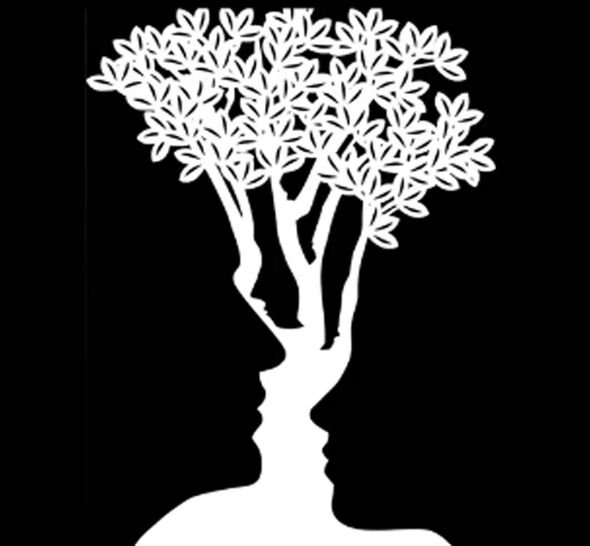Lost for Words - 2. Beholding
Lost for Words
EPA Blog by Susan Holliday
In this series of posts for the EPA Blog I invite you to join me in an exploration of words we might draw on to distil and convey what happens in the therapy space. Each of the words I share carries in its belly a vital image or story that can help us convey the art of psychosynthesis therapy. Our second word in the series is Beholding.
2. ‘Beholding’ (v.) From the Old English bi = thoroughly + halden = to hold
‘To perceive someone (or something) in their fullness and particularity through sustained attention and tender inquiry’
I am walking up the river valley. Streams tumble down the steep slopes like children giddy with the thrill of gravity. Below me a shimmering silver ribbon marks the place where two great masses of land touch. With every step forward I can feel my senses opening. One by one my preconceptions fall to the floor, as though removed by an invisible lover. What I see becomes saturated, alive and particular.

Walking in nature, I have learned the first principal of perceptive seeing: To see afresh, our vision needs to be undressed by time. Walking for many hours in the Cairngorm mountains, Scottish nature writer Anna Shepherd notices how her perception gradually deepens, so:
The eye sees what it didn’t see before, or sees in a new way what it had already seen. So the ear, the other senses. 1
This strikes me as a beautiful description of the gradual process of revelation which takes place through our ‘beholding’ in the therapy encounter. Through the rhythm of weekly meetings over a matter of months (sometimes years) our eyes begin to see what they didn’t see before. In time we see the person before us in a wholly new way. ‘Beheld’ with sustained and tender attention, each person becomes rich and particular in their incomparable being and vivid in the experience of their becoming.
The word ‘behold’ is perhaps best known to us as the favoured greeting of angel messengers who are the bearers of emergent truths. The word is used twice in Luke’s account of the Annunciation and again later to herald the nativity to the shepherds. ‘Behold’ signals that something important is happening, something is on the cusp of disclosure, so we need to stay alert and keep watching.
‘Behold’ invites us to hold faith with a process of revelation which is somehow beyond our control. The writers of the New Testament described faith as:
The substance of things hoped for and the evidence of things not seen. 2
As a psychotherapist, I have found that faith in ‘the evidence of things not seen’ creates a gravitational field that draws out the tiniest specks of original wholeness from the furthest reaches of a person’s unconscious. These fragments of being are not perceptible at first glance. They surface in response to a quality of vision that has
become faithful through long exposure to the hidden dimensions of the human heart.
In Luke’s account of the angel visitations, ‘behold’ is accompanied by the comforting plea ‘fear not’. When something buried or unbidden surfaces, the impulse is often to flee. We might distract ourselves or rationalise the nascent truth, so that its vitality and particularity are lost in glib generalisation. The angel entreaty ‘fear not’ reminds us that our desolation and bewilderment need to be beheld (‘be-held’), for as long as it takes. We have to resist the impulse to flee, the desire to move swiftly on. ‘Beholding’ restores that quality of vision through which we are able to ‘hold fast’, to ‘bear with’ what we are not yet ready to see clearly. We ‘hold’ on when there is nothing more that we can do in the face of what lies before us and within us, but watch and wait.
In psychosynthesis we understand that we are not only afraid of disclosing our wounding and our darkness – we are also fearful of revealing our light. As Marianne Williamson famously said:
Our deepest fear is not that we are inadequate. Our deepest fear is that we are powerful beyond measure. It is our light, not our darkness that most frightens us. 3

‘Beholding’ is especially meaningful in the face of grief. The tender territory of loss is indivisible and incomparable. Holy. It must not be analysed or scrutinised. More than anything, our grief longs to be beheld. The tender resolute gaze of the therapist enfolds the sorrowing person, entreating and helping them to bear the experience, to stay with what is unfolding. At times like these I am reminded of this beautiful evocation of ‘beholding’ from Rebecca Solnit:
Waiting, attending to, and paying attention are in some sense the same thing, waiting to understand, waiting to know, staying until connection is formed, the taking-care-of that begins by taking notice of. Perhaps it’s all encompassed in the “continuous respectful attendance to the presence of the Divine. 4
The art of beholding is explored in detail in my book Hidden Wonders of the Human Heart.
www.susanholliday.co.uk
REFERENCES
1 Nan Shepherd, The Living Mountain (Canongate Books, 2011)
2 The New Testament: Hebrews 11:1
3 Marianne Williamson, A Return to Love: Reflections on the Principles of ‘A Course in Miracles’ (Harper One, 1996)
4 Rebecca Solnit, Introduction to ‘Embrace Fearlessly the Burning World’ by Barry Lopez (Random House New York, 2022).
%203%20(1).jpg)
Susan Holliday
Susan Holliday is a psychosynthesis psychotherapist and published author, based in the UK. She is a founding member of EPA and leads the EPA WRITERS Group. Her contributions to the community reflect our shared values of learning together and encouraging each other to shine by making our own unique contribution.


-1.jpg)